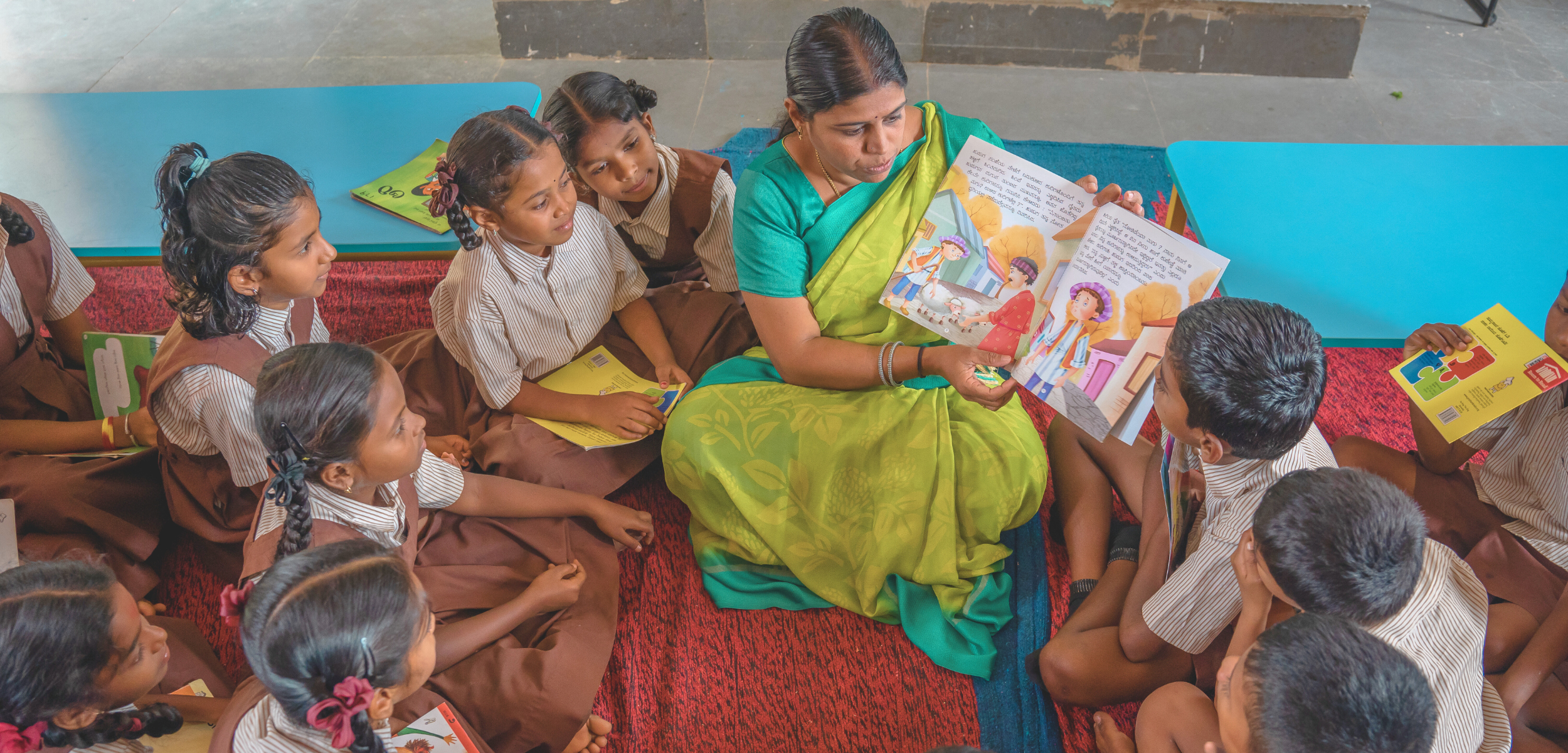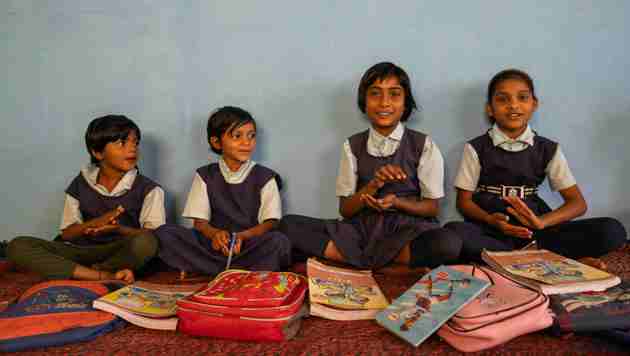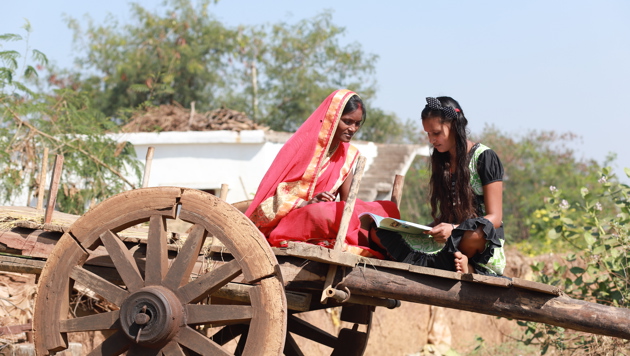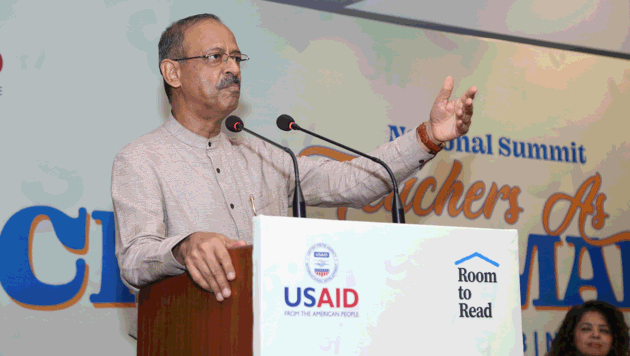Literacy interventions at scale: Building systems that deliver
September 03, 2025

By Saktibrata Sen
Senior Director of Programming in India
Room to Read’s Literacy Portfolio
Foundational learning skills are critical to a child’s educational trajectory and outcomes. Without automaticity in literacy skills — such as reading fluently and comprehending text — by the early grades, students face persistent learning gaps, hindering their ability to engage with advanced curricula.
These skills are the bedrock of all future learning, enabling children to absorb new knowledge and think critically. Students who struggle with basic reading fall further behind each year, making it essential to strengthen these abilities early on. Ensuring strong literacy foundations gives every child a fair chance to thrive academically and beyond.
Strong foundational literacy skills make room for a lifetime of learning. Recognizing this, India’s NIPUN Bharat Mission aims to universalize foundational literacy and numeracy by the 2026–27 academic year. By the end of Grade 2, all children should be able to read fluently with comprehension.
Yet even before this initiative, Room to Read demonstrated scalable solutions through projects like the Scaling up Early Reading Intervention (SERI) in India, funded by USAID. 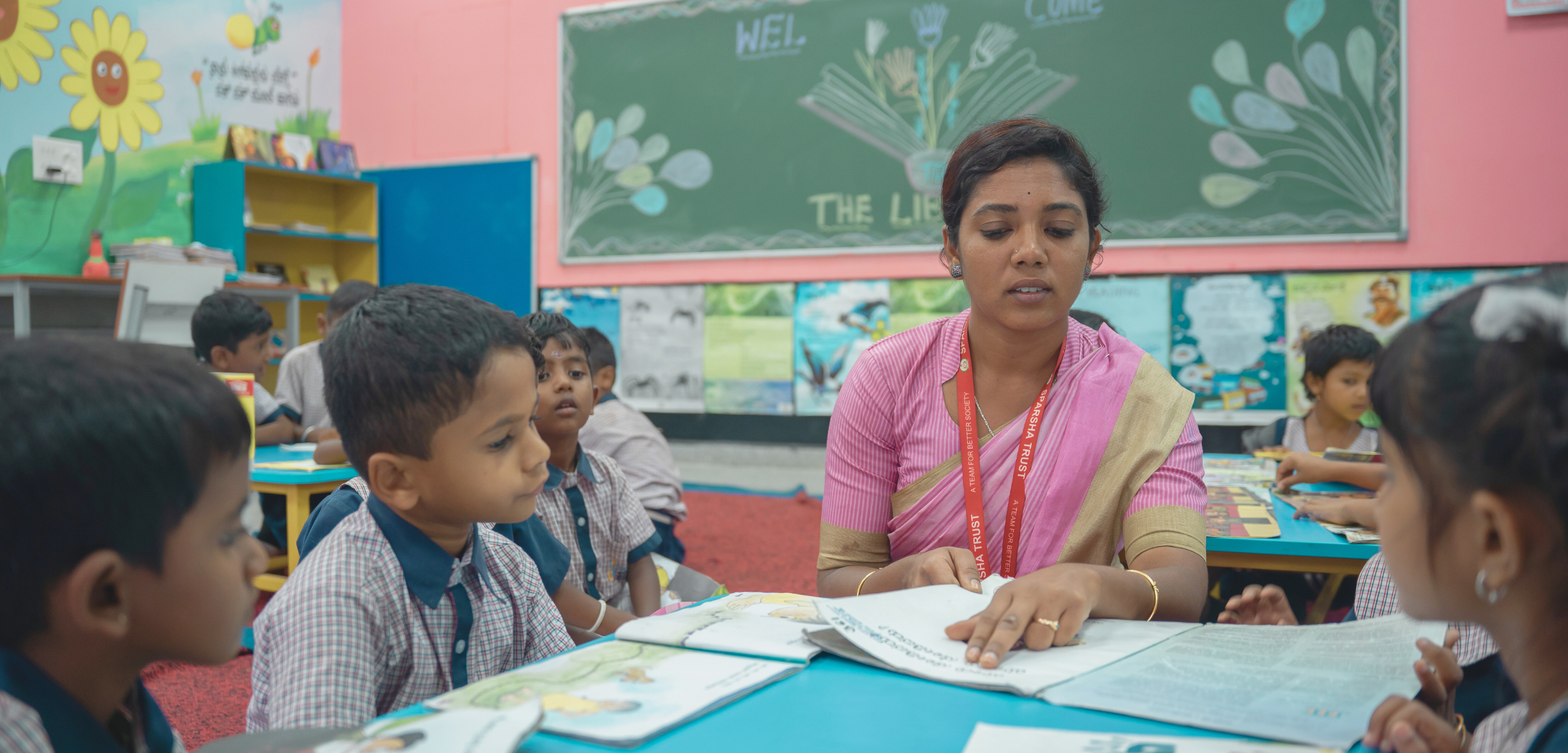
Key strategies for scalable literacy interventions
SERI, which was initiated in 2015 and completed in 2024, functioned as both an implementation and system support exercise, designed to enhance our learnings from large-scale, structured, scalable literacy interventions. SERI operationalized capacity-building initiatives — such as teacher training and resource distribution — while ensuring fidelity through real-time monitoring and responsive feedback loops.
SERI didn’t just train teachers. It also helped governments and schools identify and solve for systemic challenges, like the streamlining of teacher professional development and collecting data in real time, including data collected from teacher trainings and classroom assessments. Data collection methods were also standardized across districts. The result: For the first time, results, including improved reading scores, could be compared between schools reliably.
But the real breakthrough came from how SERI turned small wins into large-scale change. Take Priya (name changed), a teacher in Uttarakhand: After Priya was trained in interactive storytelling techniques through SERI, her students’ interest in picking up and exploring books on their own increased significantly. Feedback shared through SERI collected data from Priya’s classroom, shared her methods with other educators through workshops, and then adjusted the training based on their feedback. Over time, what worked in one village became a blueprint for dozens more. 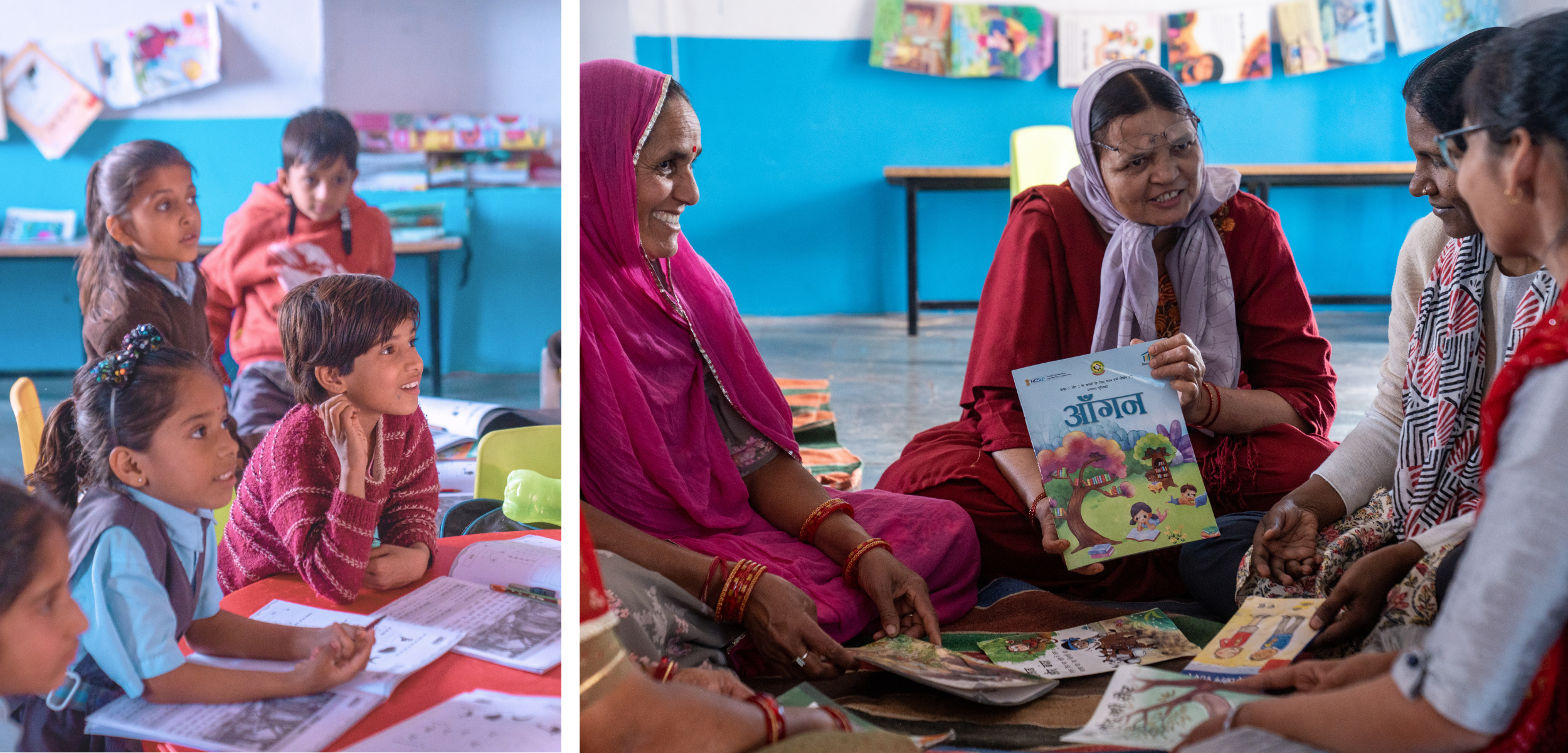
This two-pronged approach — fixing systemic bottlenecks like large-scale quality training and data-driven decision-making while empowering educators with the tools needed to succeed — created a lasting impact. Schools weren’t just getting temporary upgrades; they were building a culture where data and adaptability drove every decision.
Large-scale success lies in its systemic approach, combining pedagogical innovation with government collaboration:
- Structured pedagogy: Room to Read’s "I Do, We Do, You Do" model scaffolds learning, transitioning students from guided instruction to doing things independently. Structured lesson plans and teacher guides ensure consistency and ease of adoption.
- Systemic capacity building: SERI strengthens government systems by training government staff in mentoring, monitoring and research, ensuring sustainability beyond the project lifecycle. This was an important step for Room to Read in building sustainability and a systemic shift across India.
- Co-creation of quality educational content: Room to Read collaboratively developed graded readers, teacher manuals and supplementary material aligned with national and state curricula, enhancing relevance and scalability.
- Educator support: We provided on-site mentoring, coupled with structured lesson plans, bridging the gaps between training and classroom practice, fostering pedagogical confidence.
During the literacy intervention, Room to Read identified the following critical enablers for scaling change:
- Alignment with existing practices: Through SERI, teachers’ current pedagogical mindsets were understood, and changes were designed by building examples from existing classroom practices.
- Systematic monitoring and support: At the beginning, states had their tracking mechanism; in some cases, the data was captured largely on process indicators. During the project, these were revised, creating a balance between process and knowledge indicators.
- Sustainable institutional integration: Embedding education interventions within government structures ensures long-term impact. For example, in many states like Uttarakhand, Jharkhand and Rajasthan, Room to Read co-created the State Curriculum Framework, a guiding document that influenced the development of textbooks, school pedagogy and other state learning materials. In states like Madhya Pradesh and Jharkhand, Room to Read partnered with the government to co-create classroom observation indicators, which further enhance the quality of teaching and learning. With this approach, Room to Read has influenced India's approach to, and the design and implementation of, educator training and coaching.
Conclusion: Literacy interventions require a dual focus
SERI’s model underscores that scalable literacy solutions require a dual focus: Robust pedagogical methods and systemic reinforcement. By combining structured instruction with institutional capacity building, such initiatives can achieve sustainable, long-term, lasting change, offering a blueprint for future work at scale. The path to universal foundational literacy demands not just innovation but deliberate alignment with the systems that sustain it.
